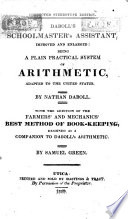 | Nathan Daboll - Arithmetic - 1829 - 268 pages
...thewhol* debt. PROBLEM III Given the first term, last term, and common difference, to find the numbei of terms RULE. Divide the difference of the extremes by the common difference, and the quotient increased by 1 is the number oĽ terms EXAMPLES. 1. If the extremes be 3 and 45, and the coamon difference... | |
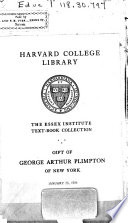 | Roswell Chamberlain Smith - Arithmetic - 1830 - 286 pages
...A. l2. Hence, when the extremes aiid common difference are given, to find the number of terms ; — Divide the difference of the extremes by the common difference, and the quotient, increased by 1, will If e the answer. 17. If the extremes be 3 and 45j and the common difference 6,... | |
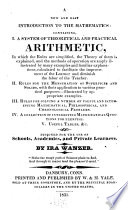 | Ira Wanzer - Arithmetic - 1831 - 408 pages
...Prub. II. PROBLEM IV. — The extremes and the common difference of the terms being given, to find the number of terms. RULE.— Divide the difference of the extremes by the common difference of the terms, and the quotient, increased by 1, will be the answer. "„ Ex. 1. If the extremes be... | |
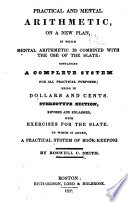 | Roswell Chamberlain Smith - Arithmetic - 1831 - 286 pages
...terms. A. 32. Hence, when the extremes and common difference are given, to und the number of terms ; — Divide the difference of the extremes by the common difference^. and the quotiejil, increased by 1, will be the answer. 17. If the extremes bo 3 and 45, aud the common ilifloronce... | |
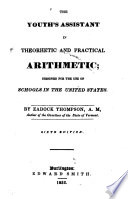 | Zadock Thompson - Arithmetic - 1832 - 182 pages
...and 4+1=) 5 Ans. Hence, III. The first term, the lost term, and the common- difference given to find the number of terms. RULE. — Divide the difference...extremes by the common difference, and the quotient, increased by 1, will be the answer. 2. If the first term of a series be 8, the last 108, and the common... | |
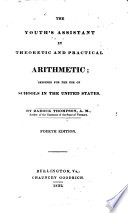 | Zadock Thompson - Arithmetic - 1832 - 186 pages
...and 4+1—) 5 Ans. Hence, III. The first term, the last term, and the common difference given to find the number of terms. RULE. — Divide the difference...extremes by the common difference, and the quotient, increased by 1, will be the answer. 2. If the first term of a series be 8, the last 108, and the common... | |
 | Nicolas Pike - Arithmetic - 1832 - 544 pages
...=9X8=72, and 1+2+3+4+5+6+7+8=— =36 PROBLEM III. Gil-en the extremes and the common difference, to find the number of terms. RULE.* Divide the difference...extremes by the common difference, and the quotient increased by 1 will be the number ef terms required. EXAMPLES. 1st. The extremes are 3 and 39, and... | |
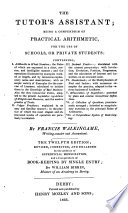 | Francis Walkingame - 1833 - 204 pages
...the whole distance 366 miles. Case 3. The ttvo extremes and the common difference being given, lojind the number of terms. RULE. Divide the difference of...extremes by the common difference, and the quotient increased by unity is the number sought. (6) A person travelling into the country, went 3 miles the... | |
 | Frederick Emerson - Arithmetic - 1834 - 300 pages
...also the number of miles travelled. PROBLEM iII. The extremes and common difference given, to find the number of terms. RULE. Divide the difference of the extremes by the common difference, and add 1 to the quotient; the sum will be the number of terms. The difference of the extremes divided... | |
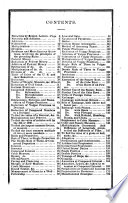 | John Rose - Arithmetic - 1835 - 192 pages
...Given the extremes (the first and last terms,) and the common difference, to find the number of terms. Divide the difference of the extremes, by the common difference, and the quotient increased by 1 will be the number of terms required. 1. The extremes are 2 and 53, and the common difference... | |
| |